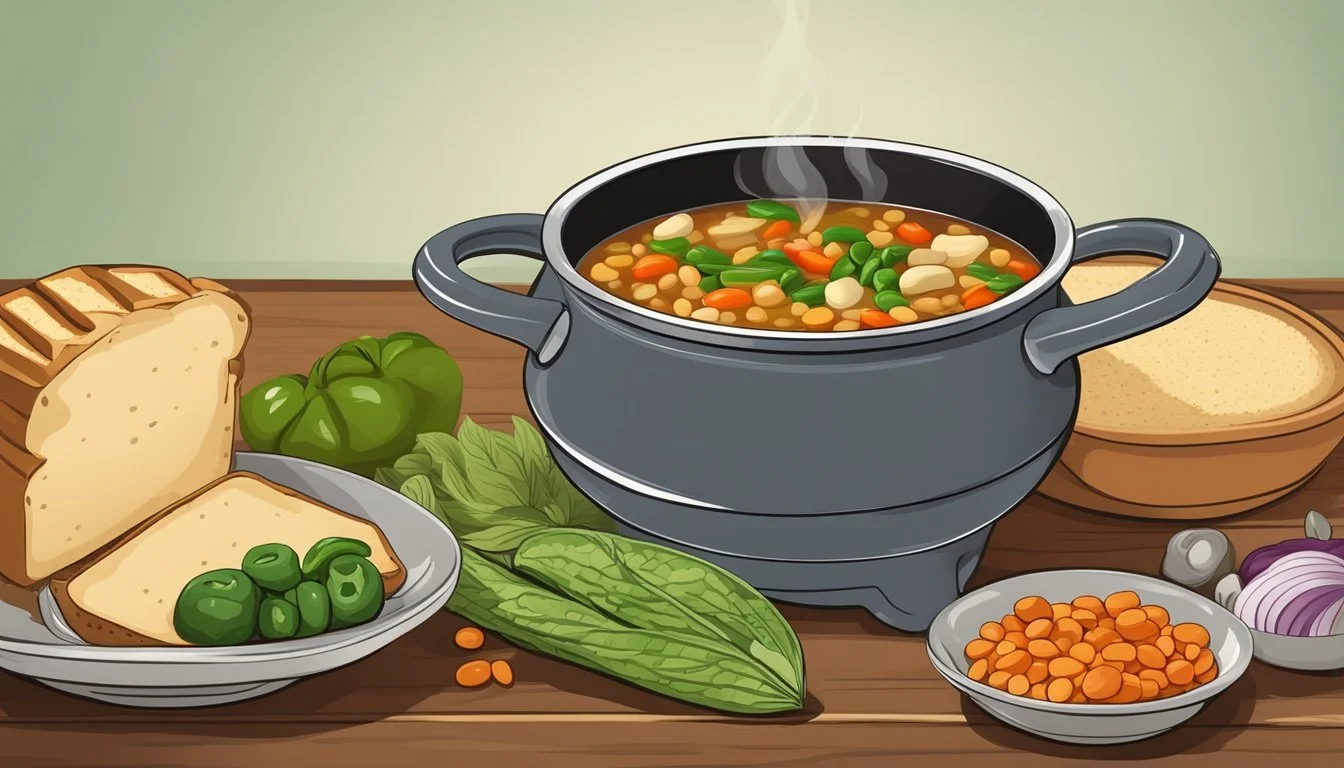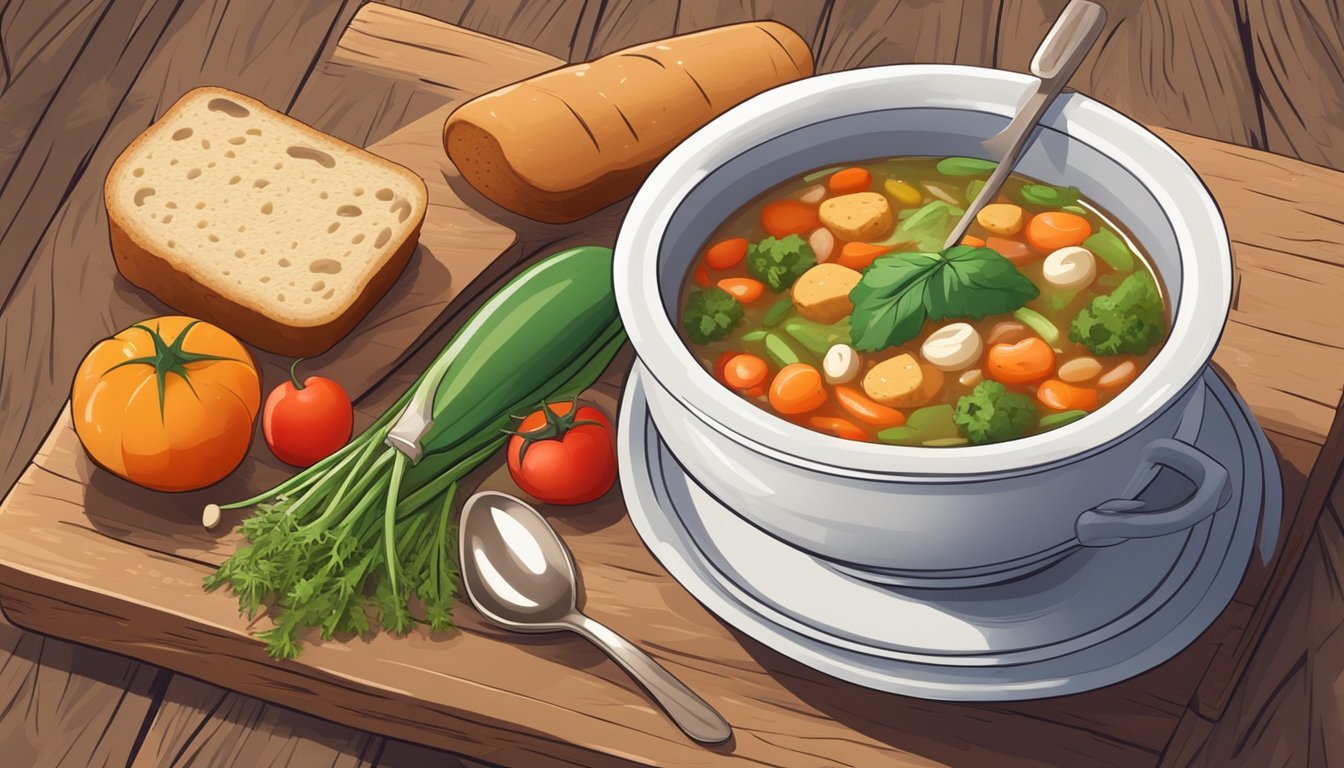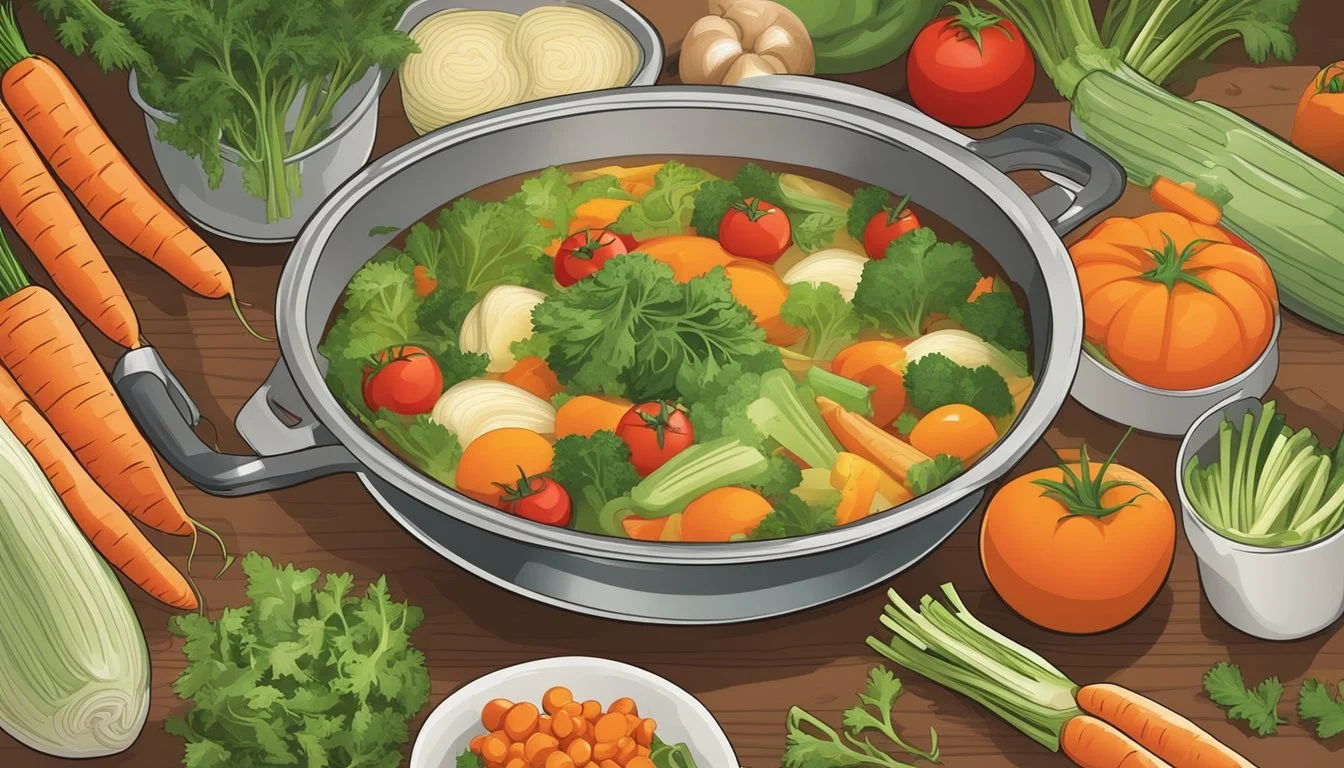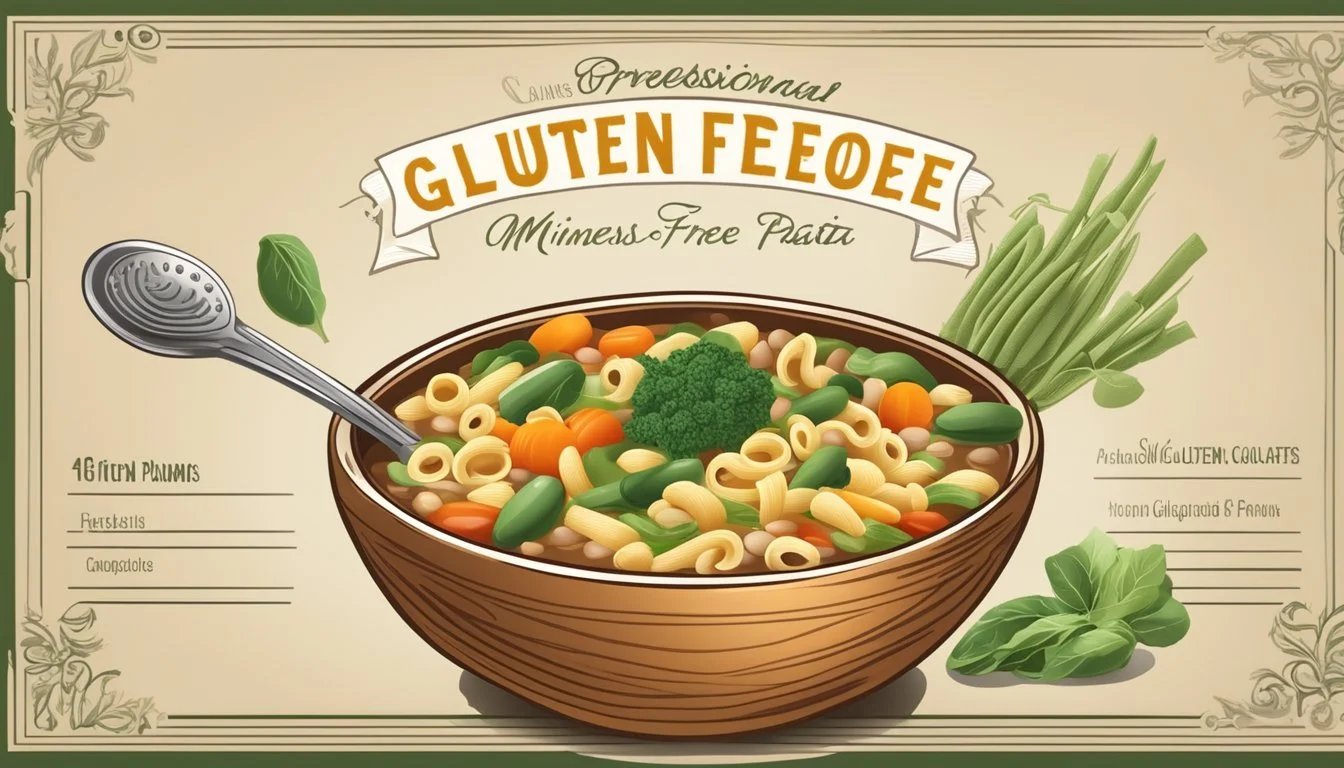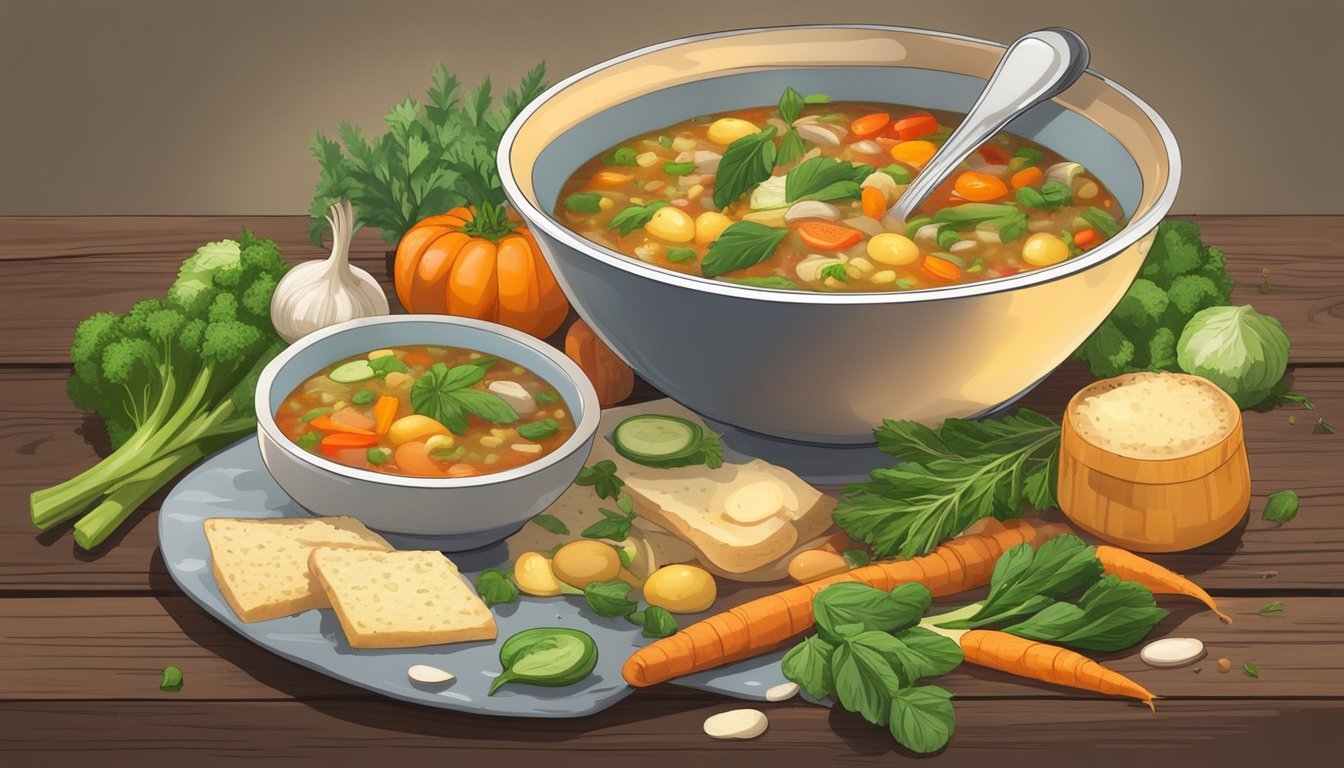Is Minestrone Soup Gluten-Free?
Understanding Its Ingredients and Variations
Minestrone soup is a hearty Italian soup known for its robust flavor and versatile ingredients. Traditional recipes include a medley of vegetables, beans, and pasta (What wine goes well with pasta?) simmered in a tomato-based broth. The inclusion of pasta raises a question for those following a gluten-free diet: Can minestrone be gluten-free? The answer is yes, with the right adjustments. Gluten, a protein found in wheat, barley, and rye, can be easily avoided by selecting gluten-free pasta options or omitting pasta altogether from the recipe.
When adapting minestrone soup to be gluten-free, it’s not just the pasta that warrants attention; one must also be mindful of the broth and any thickeners used. Many store-bought broths and seasoning blends can contain hidden sources of gluten. Therefore, individuals with celiac disease or gluten sensitivity should carefully read labels or opt for homemade broths that are guaranteed to be free from gluten. To ensure a gluten-free soup, every ingredient from the broth to the thickening agents should be verified as gluten-free.
A gluten-free minestrone recipe starts with sautéing a base of aromatic vegetables such as onions, garlic, carrots, and celery in olive oil. From there, additional vegetables like zucchini (What wine goes well with zucchini?), green beans, and potatoes may be added according to preference. Beans such as kidney or cannellini provide a rich source of protein and fiber, and the soup’s flavors are typically enhanced with Italian seasoning. By choosing ingredients that are safe for a gluten-free diet, the result is a nourishing and inclusive minestrone soup that suits a variety of dietary needs without compromising on taste.
Understanding Gluten-Free Diets
When discussing gluten-free diets, it is essential to understand what gluten is and the health implications that lead individuals to choose or require a gluten-free lifestyle.
What Is Gluten
Gluten is a protein complex found in wheat, barley, rye, and crosses between these grains. It acts as a binding agent that gives breads, pastas, and cereals their typical structure and chewiness. Gluten is present in many types of foods, even some that might not be expected, such as certain sauces or processed foods.
Benefits of Gluten-Free Eating
Individuals adopt a gluten-free diet for various reasons, but notably for managing celiac disease, which is an autoimmune disorder where the ingestion of gluten leads to damage in the small intestine. Following a gluten-free diet is crucial for people with this condition as it is the only effective treatment to prevent complications.
For others, a gluten-free diet may help to alleviate symptoms associated with non-celiac gluten sensitivity such as bloating, gas, or fatigue. It's important to note that while a gluten-free diet can be nutritionally adequate, it should be well-planned to ensure it is balanced and healthy.
Components of Traditional Minestrone Soup
Minestrone soup is a hearty Italian dish known for its robust flavors and varied ingredients, which can include a mix of beans, vegetables, and pasta. Recognizing the ingredients' inherent characteristics is essential when determining whether the soup can be gluten-free.
Key Ingredients of Minestrone
Beans: A core component, often kidney or cannellini beans, which are naturally gluten-free.
Pasta: Regular pasta contains gluten; however, gluten-free pasta can be substituted.
Vegetables: Staples include carrots, onions, and celery, all of which are gluten-free.
Tomatoes: Crushed or diced, providing richness without gluten.
Vegetable Broth: Often used as the base, and one must ensure it's free from gluten-containing additives.
Seasonings: Italian herbs enhance the soup's flavor and are typically free of gluten.
Common Sources of Gluten in Soup
Pasta: Traditional minestrone incorporates pasta, a product made from wheat containing gluten.
Vegetable Broth: Some broths may have additives or flavorings that contain gluten.
Seasonings: While inherently gluten-free, cross-contamination during processing can introduce gluten.
By carefully selecting gluten-free pasta and ensuring that broth and seasonings are free from gluten contamination, minestrone soup can be made suitable for a gluten-free diet.
Crafting a Gluten-Free Minestrone
Crafting a gluten-free minestrone requires careful selection of ingredients, including pasta and broth, to ensure the dish remains free of gluten while maintaining the robust flavors of this classic soup.
Choosing Gluten-Free Pasta
Traditional minestrone soup often includes pasta, which usually contains gluten. To make a gluten-free version, one must select pasta made from gluten-free grains such as rice, corn, or quinoa. These alternatives provide similar texture and taste when cooked properly. It's important to:
Look for labels that clearly state "gluten-free" to avoid cross-contamination.
Cook gluten-free pasta separately to prevent it from releasing excess starch into the soup, which can occur with gluten-free varieties.
Alternative Thickeners and Broths
The rich texture of minestrone often comes from the natural starchiness of beans and the use of wheat-based thickeners. For a gluten-free minestrone, they use alternative thickeners such as:
Cornstarch or arrowroot as a gluten-free thickening agent. Simply mix with a small amount of water before adding to the soup to prevent clumping.
Beans, such as cannellini or kidney beans, lend their natural creaminess when cooked and slightly mashed.
Additionally, the base of any good minestrone is its broth. A gluten-free minestrone requires:
Vegetable broth that is certified gluten-free to ensure there are no hidden sources of gluten.
Olive oil as a base for sautéing vegetables before adding broth, imparting a rich flavor while being naturally gluten-free.
By incorporating these ingredients, chefs can create a minestrone soup that everyone can enjoy, regardless of dietary restrictions.
Customizing Your Gluten-Free Soup
Crafting a gluten-free minestrone soup allows one to be creative and cater to various dietary preferences. Whether one is vegetarian, vegan, or looking for a protein boost, this soup offers a versatile canvas.
Adding Proteins and Vegetables
To ensure the soup is both hearty and nutritious, one can incorporate a variety of proteins and vegetables. For a vegan or vegetarian version, adding chickpeas or kidney beans not only enriches the soup with protein but also adds fiber. Vegetables like zucchini, spinach, and kale are excellent for texture and nutrients. One could add these vegetables according to their cooking time to preserve their flavor and texture.
Proteins: chickpeas, kidney beans (canned or cooked)
Vegetables: zucchini (diced), spinach (chopped), kale (torn into small pieces)
Herbs and Seasonings for Enhanced Flavor
The flavor profile of the soup can be elevated with the judicious use of herbs and seasonings. Classic Italian herbs like oregano and basil impart a warm, aromatic flavor suited for minestrone. For those who have to avoid dairy, a dairy-free parmesan alternative can be used to add a savory depth without compromising the dietary restrictions.
Herbs: oregano (dried or fresh, finely chopped), basil (fresh, torn or finely chopped)
By considering these options, cooks can tailor the gluten-free minestrone to meet various nutritional needs and taste preferences.
Cooking and Simmering Techniques
When preparing minestrone soup, precise cooking and simmering techniques can significantly influence the overall quality of the dish. These methods ensure that flavors are fully developed, and ingredients are cooked to the appropriate texture.
Optimal Cooking Times
Cooking times are pivotal for the integrity of minestrone's ingredients. A Dutch oven or a heavy-bottomed pan is an ideal vessel for starting the soup on the stovetop. Aromatic vegetables like onions, carrots, and celery should be sautéed over medium heat until they are soft and translucent, typically taking around 5 to 7 minutes. A crucial consideration is to not overcook the vegetables at this stage to maintain their structure and flavor. This initial cooking stage sets the foundation for a cozy and robust soup.
Adding ingredients like garlic requires attention, as it should be cooked until fragrant, which usually takes about 1 minute. Hard vegetables and legumes follow, requiring varying times:
Diced carrots and green beans: approximately 2 minutes
Zucchini: included with liquid ingredients to avoid overcooking
The pasta, particularly for gluten-free minestrone, is best cooked separately to avoid introducing excess starch into the soup and to prevent it from becoming mushy.
Simmering for Flavor Development
Simmering is the stage where the flavors of the minestrone soup meld and deepen. After bringing the soup to a boil, reducing the heat to low is critical to maintain a gentle simmer. This allows the seasonings and ingredients like tomatoes, water or broth, and kidney beans to infuse the soup with their flavors without breaking down too much. Maintaining a partially covered pot allows for steam to escape and the soup to thicken slightly.
During simmering, it is essential to:
Stir periodically to distribute flavors and heat evenly.
Taste and adjust seasonings to ensure a perfect balance of flavors.
Simmering duration can vary based on ingredient ratios but generally lasts between 20 to 30 minutes. This process not only enhances the taste but contributes to the soup's comforting warmth and rich aroma.
Serving and Garnishing Minestrone
When serving Minestrone, the choice of garnish can significantly enhance the soup. It adds both flavor and an appealing look. Cheese is a traditional topping, while fresh herbs bring a burst of color and taste.
Topping with Vegan or Traditional Cheese
For those adhering to a gluten-free diet, it's important to ensure that the cheese used does not contain any gluten-containing additives. Parmesan cheese is a classic choice, offering a salty and slightly nutty flavor profile. It should be freshly grated over the hot soup just before serving to allow it to melt slightly into the broth. However, individuals who follow a vegan diet or are dairy-free can opt for nutritional yeast as a replacement. Nutritional yeast provides a cheesy flavor and is also a source of vitamins and nutrients.
Using Fresh Herbs as Garnish
Fresh herbs serve as an aromatic garnish, contributing to both the appearance and the taste of the soup. Fresh parsley is commonly used; it should be finely chopped and sprinkled over the soup right before it's served, ensuring the vibrant green color and fresh taste are at their peak. For vegan minestrone variations, using fresh herbs is an excellent way to add depth of flavor without relying on animal products.
Storing and Freezing Minestrone Soup
When it comes to gluten-free minestrone soup, maintaining freshness and texture is essential. Implementing the right storage and freezing methods can help preserve the soup’s quality.
Proper Storage for Freshness
To keep gluten-free minestrone soup fresh, it should be stored in an airtight container and placed in the refrigerator. The soup stays at its best quality for 3 to 4 days. It's important to let the soup cool to room temperature before refrigerating to prevent condensation and bacterial growth.
Cooling: Let soup sit until it reaches room temperature.
Transfer: Pour soup into an airtight container.
Refrigerate: Keep refrigerated at or below 40°F (4°C).
How to Freeze and Reheat Soup
Freezing gluten-free minestrone soup helps extend its shelf life up to 2 to 3 months. Before freezing, let the soup cool completely. To freeze, portion the soup into freezer-safe bags or containers, leaving some space to allow for expansion.
Cooling: Ensure soup is completely cooled to avoid ice crystal formation.
Packaging: Use freezer bags or airtight containers, label with the date.
Freezing: Store containers flat in the freezer if using bags to save space.
Thawing: Overnight in the refrigerator or using the defrost setting on a microwave.
Reheating: Warm on the stove over medium heat until heated thoroughly.
Tips for a Healthier Minestrone
Minestrone soup can be a nutritious and hearty dish. This section provides practical tips on how to increase its health benefits while considering sodium and fat content.
How to Enhance Nutritional Value
To boost the nutritional value of minestrone soup, one can incorporate a variety of vegetables and legumes. These not only add essential vitamins and minerals but also increase dietary fiber, which is beneficial for digestive health. Using olive oil as a base for sautéing vegetables brings in healthy fats and antioxidants. Here are specific strategies:
Veggies: Add kale, spinach, or Swiss chard for extra nutrients and fiber.
Beans: Include kidney beans or cannellini beans to enrich the soup with plant-based protein.
Whole grains: Opt for whole grain pasta or quinoa instead of traditional pasta to increase fiber content.
To keep it gluten-free, ensure that all processed ingredients like broth or canned goods are certified gluten-free.
Low-sodium and Fat-reduction Strategies
Managing the sodium and fat content is crucial for maintaining the health quotient of minestrone soup. Here are some specific ways to achieve this:
Broth: Use low-sodium vegetable broth or make homemade broth to control salt levels.
Salt: Add salt sparingly and enhance flavor with herbs like thyme, bay leaves, or basil instead.
Meat: If including meat, opt for lean cuts or use them sparingly to reduce fat content.
Cheese: Choose a strong-flavored cheese like Parmesan and use it sparingly for topping.
By considering these tips, one can make a healthier version of minestrone that contributes positively to overall well-being.
Troubleshooting Common Issues
When making gluten-free minestrone soup, ensuring the right soup consistency and flavor balance is crucial. Here are some tips to address these common issues.
Adjusting Soup Consistency
Soup too thick:
Add liquid: Incrementally add stock or water until desired thickness is achieved.
Simmer: Allow the soup to simmer uncovered to integrate new liquid.
Soup too thin:
Simmer: Reduce the soup by letting it simmer uncovered to evaporate excess liquid.
Thickeners: Consider a gluten-free thickener such as cornstarch or arrowroot mixed with a small amount of cold water, then stir it into the soup.
Balancing Flavors
Soup too bland:
Salt: Add a pinch of salt at a time, tasting after each addition.
Black Pepper: A few grinds of black pepper can enhance the overall flavor profile.
Herbs: Dried Italian herbs or fresh basil can provide a flavor boost.
Soup too acidic or intense:
Sweetener: A small amount of sugar or a dash of grated carrot can counteract acidity.
Red Pepper Flakes: If too spicy, balance with more stock or water and a bit of tomato paste to mellow flavors.
Conclusion
Minestrone soup can be a delightful and warming addition to the dinner table. This Italian soup, known for its robust flavor and hearty vegetables, typically contains pasta or grains, which are sources of gluten. However, it can be made gluten-free with the right adjustments.
One should opt for gluten-free pasta or substitute it with rice or quinoa. It is important to use a gluten-free stock or broth, as standard options can contain gluten. When thickening the soup, alternatives like cornstarch or a slurry of gluten-free flour mixed with water can be employed instead of wheat flour.
Ingredients Checklist:
Gluten-free pasta or grains (rice, quinoa)
Fresh vegetables (onions, garlic, carrots, zucchini, etc.)
Legumes (kidney beans, cannellini beans)
Gluten-free vegetable or chicken stock
Herbs and spices (basil, oregano, thyme)
Crushed tomatoes
Olive oil
When preparing minestrone soup at home, vigilance in checking ingredient labels for hidden sources of gluten is crucial. For those seeking convenience, some brands offer pre-made gluten-free minestrone soup options.
In summary, with mindful ingredient selection, minestrone soup retains its traditional Italian flavors while becoming a safe and satisfying meal for those following a gluten-free diet.

